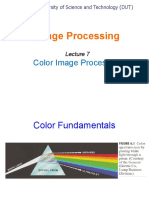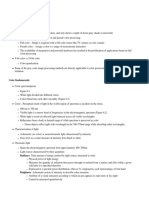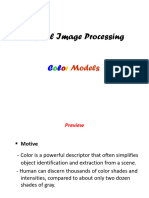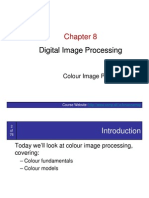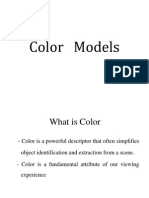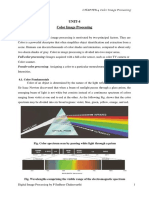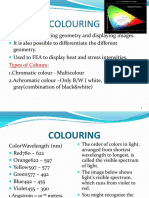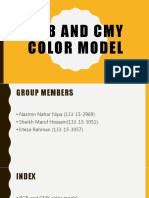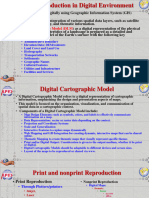0% found this document useful (0 votes)
110 views58 pagesColor Patterns PDF
The document discusses color image processing and color fundamentals. It covers two major areas of color image processing: full-color processing using images from color sensors and pseudo-color processing that assigns color to grayscale intensities. It also discusses the human perception of color, color models like RGB, CMY, and HSI, and how color television and printing represent color.
Uploaded by
Mihir PantCopyright
© © All Rights Reserved
We take content rights seriously. If you suspect this is your content, claim it here.
Available Formats
Download as PDF, TXT or read online on Scribd
0% found this document useful (0 votes)
110 views58 pagesColor Patterns PDF
The document discusses color image processing and color fundamentals. It covers two major areas of color image processing: full-color processing using images from color sensors and pseudo-color processing that assigns color to grayscale intensities. It also discusses the human perception of color, color models like RGB, CMY, and HSI, and how color television and printing represent color.
Uploaded by
Mihir PantCopyright
© © All Rights Reserved
We take content rights seriously. If you suspect this is your content, claim it here.
Available Formats
Download as PDF, TXT or read online on Scribd
/ 58











